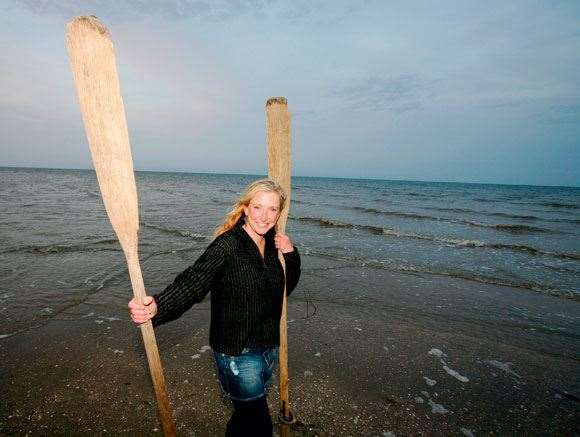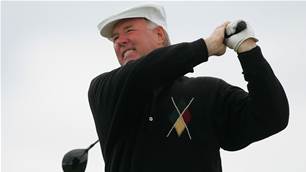A decade ago, Roz Savage, a 34-year-old London office worker, decided to undergo an odd piece of self-: analysesshe sat down and wrote two versions of her own obituary.
 Roz Savage Portrait Images: Courtesy of Roz Savage
Roz Savage Portrait Images: Courtesy of Roz SavageMoulding the Mind
“I use a variety of techniques to deal with the mental stress of rowing long distances. Firstly, I find it important to properly define my motivation. I need to understand exactly why I’m undertaking this challenge, and what rewards it will bring me when I succeed. Secondly, reading about people who’ve had really tough times in the wild – Ernest Shackleton, Aron Ralston, Ranulph Fiennes, Joe Simpson – helps me to remember there’s always someone worse off than myself!
“But probably the most important technique I use is to ‘focus on the process’, to know what needs to be done today to bring me closer to my goal. So I’ll have a very vivid image in my mind of the goal itself – how it’ll feel to arrive at the end of the journey, how this fits into the bigger picture of my life direction – and I know what needs to be done in the here and now to reach that goal. I refuse to contemplate tomorrow and all the other days that will pass between where I am now and where I want to be. I just find that too overwhelming. I concentrate on taking it one day, one stroke at a time.”
Fuelling the Engine
“I eat really healthily at sea – unlike on dry land, unfortunately! And I try to keep my environmental footprint small by using unprocessed foods as much as possible. Foods also have to be long-lasting, uncrushable, light, compact, and full of calories. So I eat wholefood nut and seed bars, nuts, dried fruit and occasionally freeze-dried expedition meals. I also grow my own beansprouts onboard, using peas, beans and lentils in an Easy-Sprout pot. These are real superfoods, full of vitamins, enzymes and fibre. I mix them up with some tahini, almonds and nama shoyu sauce and eat them with crackers. Yum! But despite all this good food I still tend to lose 11kg on each ocean crossing – then regain 14 on dry land ...
“Water-wise, I have a Spectra water-maker that converts saltwater into freshwater by forcing it through a series of increasingly fine filters. I also take 75L of freshwater which serves a double purpose as emergency supplies and ballast to help keep my boat upright.”
The Trusty Steed
“It makes me wince when people describe Sedna [my boat] as a ‘high-tech rowboat’. She’s really just a basic boat, with an extremely low-tech engine – me. I do have technology on board, sure, but it doesn’t make the boat go any faster. Recently I actually decided to change the colour of my boat. My theory is that you can make anything appear high-tech if you paint it silver. So I’m going for the reverse effect – a nice, low-tech, highly spiritual purple.
“I communicate with shore by satellite phone. I also use the phone, connected to a laptop, to send emails and post blogs. On the Atlantic the phone stopped working 24 days before the end of my journey, so I lost all communication. No weather forecasts, no blog posts, no calls to my mother. Strangely, though, I loved it. Not many people have the opportunity to experience such complete isolation, peace and quiet.”
Related Articles

Morri: Golf at Riviera is golf worth watching

Review: Titirangi Golf Club













